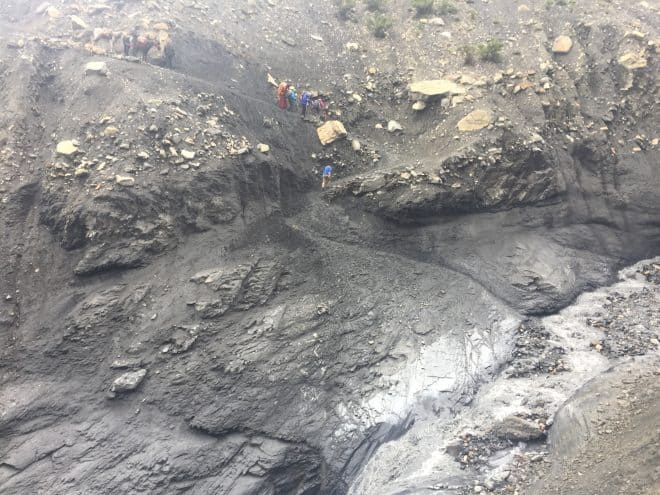“Trust the Rocks.” That was Sonam’s advice as I cautiously surveyed each stone in the stream prior to stepping. I didn’t realize it at the time, but it was sage advice. By day three of the trek through the Mustang region of Nepal, many in the group were already exhausted. Sonam, however, moved quickly over the terrain wearing a pair of open toed sandals. We trekkers were, of course, wearing the latest hiking boots designed to maintain a proper arch and provide ankle support, seemingly helpful while traversing narrow ledges carved out in the shale, glacial moraines, and other equally treacherous terrain. My sense was that to keep my balance and prevent injury, every step required focused attention. As a result, I moved slowly.
As the days progressed, I realized Sonum was right. If I relaxed and trusted the rocks, I could walk over them quickly without falling or twisting an ankle. But, I also learned that trusting and being unconscious are two different states of mind.
At just over 18,000 feet, while descending from a pass, I found myself alone with Karmu, a Nepali Nurse who had joined our team. The wind howled and blew the clouds in. Then, the rain began. My body went from hot and sweaty to freezing in a matter of minutes. Although Karmu didn’t speak much English, her presence was comforting. While moving quickly down the narrow traverse, Karmu communicated that she loved American movies.
“No kidding,” I replied. “What’s your favorite movie?”
She said, “Fever.”
“Saturday Night Fever?”, I asked.
I thought she said “Yes”.
After this basic exchange, my mind wandered and I showed off a brief 70s dance move while navigating down the trail of rocks, singing “Staying Alive”. It was then that I fell on my face. Luckily, I wasn’t too badly hurt, except for a few strains, a bloodied finger, and a bruised ego.
Now that I am back relaxing at home in the US, I have become aware of how easy we have made our lives by creating floors, paved roads and other level surfaces to walk on, everywhere. It occurred to me that these conveniences might be one of the reasons why so many older people now suffer from “vertebrobasilar insufficiency”, a condition where the balance center on the brain, the cerebellum, loses its blood supply. People with this condition become more apt to fall.
Balance is a primitive brain function achieved by a coordination of different parts of the brain, including the cerebellum, the brain structure that sits in the back of the head. This part of the brain usually gets its sole blood supply from the posterior circulation, a different source than the carotid arteries which supply the majority of the brain.
Although the number one cause of vertebral-basilar syndrome has been ascribed to atherosclerosis, in many cases, the posterior circulation becomes small in caliber without obvious areas of narrowing caused by atherosclerosis on medical imaging studies. Could this be another case of “Use it or lose it?” Are creature comforts such as finished floors, walkways, chairs, etc., causing the posterior circulation to wither and leading to a loss of balance, coordination and other cerebellar functions?
What Can You Do?
Spend time each day practicing balance. Whether through indoor exercises or while outdoors, walking on uneven surfaces such as at the beach in the sand or hiking on an unpaved, non-groomed path. Using your sense of balance will increase blood flow to the back of your brain. With continued practice, over time, your ability to balance will increase. If this regimen is incorporated into daily life, it will help you maintain your ability to walk and balance into older age.

